Number four on the list of the Top Ten Design Elements that I love in a house are curtains. After linen, slipcovers, and seagrass – curtains bring so much to a room that they should always be considered when designing a house. Curtains add romance, texture and softness. They can also add jolts of needed color. They bring coziness and warmth to a room or sometimes they add a beachy breeziness. Curtains are tricky though – they need to be done right, executed perfectly, or it’s better to not bother with them at all. Nothing takes away more from a beautifully decorated room than cheaply constructed curtains – limp, skimpy, too short, too long, over embellished – you name it – it can be a disaster. A lot of people don’t care for curtains at all – they call them dust collectors, outdated, an unnecessary expense, or something “my granny had.” One of the harder parts of my job is talking clients into putting up curtains – the list of excuses can be endless: I have beautiful windows, I don’t want to cover them up, or I love my view – I don’t want to block it. Another popular excuse is this: I don’t need curtains, I already have plantation shutters (or horrors) mini blinds.
For all the reasons not to get curtains, I can argue against each point – curtains do not need to block beautiful windows or views - they can frame them. They don’t need to look like your granny’s curtains, we can update the look. And as I often have to argue - curtains can look beautiful layered against shutters or blinds. In the end, what curtains bring to a finished project is sometimes hard to elucidate. Oft times I can only say – trust me, you will love them – against strong skepticism. I really never worry too much about the outcome though, because it’s usually well received and clients are mostly surprised how much they do love them.
After years of ordering curtains for clients, I have a formula that I usually follow and it works well for me. To illustrate which window coverings look great, I’ve collected pictures of curtains that I like and don’t like which show the difference between the good and the not so good. My absolute love of curtains is actually relatively new – it came rather late in my life. I didn’t realize the importance of curtains in decorating or what a difference they truly made until I started designing houses for other people. Even in my own house, I lived without any curtains for years, and still have yet to hang them in my family room, though that is just a laziness on my part which one day I will rectify. When our long awaited curtains in the living and dining room were hung, my husband who is usually quite silent on matters of the house (except for ceiling fans, of course) remarked what a difference they made: “It’s so much cozier in here.” And I had to agree, it was – much more so. And sophisticated too. I have no idea why I waited so long to finally hang my own curtains, after all, I had ordered dozens and dozens of panels for perfect strangers, why not for myself? But living without them for years and then finally getting to enjoy their beauty only made my resolve stronger to be more assertive and convincing when broaching the subject with clients. After all, I know too well the difference between having curtains and not having curtains – and I will never go back to bare windows again.

CURTAIN PANELS – PLAIN FABRIC:

I consider Gerrie Bremermann to be the Queen of Panels – her own curtain formula was once printed in a magazine which I promptly confiscated for my own. Bremermann prefers to use three widths of fabric for each panel, a luxury few can afford. But three widths is so stunning, so full, so luscious – I would rather use more of a lesser quality of fabric than less of more expensive one. These taffeta silk panels are so perfect! Billowy, with a trimmed leading edge, the curtains are oft copied by homeowners – and who can blame them? They are stunning and perfect for a living room, dining room or master bedroom.
 Lars Bolander is another designer whose adroitness with panels I have long admired. Here, he uses taffeta on rods with no rings. The attention is meant to be wholly focused on the draping alone – not the hardware. Bolander lines his curtains with either bump or blackout – notice the sunlight does not come through the silk – washing out the color. I always line and interline my curtains, always, unless of course I am using a sheer, see-through fabric.
Lars Bolander is another designer whose adroitness with panels I have long admired. Here, he uses taffeta on rods with no rings. The attention is meant to be wholly focused on the draping alone – not the hardware. Bolander lines his curtains with either bump or blackout – notice the sunlight does not come through the silk – washing out the color. I always line and interline my curtains, always, unless of course I am using a sheer, see-through fabric.
Here Bolander again used silk taffeta with no rings. It appears he used a smocked rod pocket with heading. Huge puddling of curtains has gone out of favor in past years, but I still prefer a 3 to 4” slight puddle to my panels. Bolander’s appear to be about 8 inches.
I love curtains that are free flowing without ironed in pleats which is how I always order mine. These panels are pinch pleated at the bottom. I usually pinch pleat mine at the top. And, I’m not a cornice person usually either – I prefer plain panels but sometimes a cornice is necessary. To understand what curtains bring to a decor – imagine this vignette without the material behind it. Wouldn’t it be rather cold looking and seem that something was “missing” without the curtains?
Suzanne Kasler dressed up these silk panels with trim on the leading edge and brass rods.
Houston designer Lisa Epley used panels with her arched French doors – sometimes the perfect solution to deal with arches is just to ignore them.
Houston interior designer Renea Abbott handles a similar window in the same fashion, here with gray and cream striped silk fabric.
Simple panels, but full and unstructured, in a fabric that matches the darker stripe in the wallpaper. Very elegant with a masculine feel.
Bay windows are hard to work with – here the designer chose to mount the curtains outside the window seat – framing the view. The leading edge is taped in a darker color. These panels have pleats ironed in, a look I usually don’t care for, but notice how the pleats mimic the stripes in the chair fabric. In this instance, ironed in pleats was the absolute correct choice. Just beautiful.
Another bay window, handled in a similar manner. Since there is no window seat, I think I would have placed panels between each window, treating the area as three separate windows instead of one. By doing so, there would not have been such a wide white space stuck in the middle of a gold room.
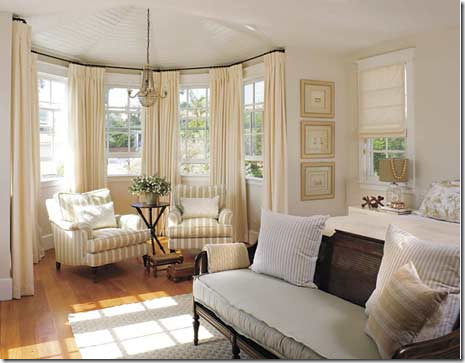 I prefer to handle bay windows like this – with a panel between each window. It makes for less of a large expanse of windows, especially when the trim is painted a different color than the walls.
I prefer to handle bay windows like this – with a panel between each window. It makes for less of a large expanse of windows, especially when the trim is painted a different color than the walls.
In this gorgeous NY apartment, Vicente Wolf chose to drape the windows – something that is often omitted in highrises. By using the wonderful light blue silk fabric, the apartment appears cozy and homey – not sleek and contemporary. It is possible that this wall had “problem windows” – which was solved by the length of the fabric. The curtains actually act as a wall here – notice the painting appears to be hanging on the curtains itself. Beautiful interior design.
How to tackle a double height room, with double windows? Full panels are hung straight down from the molding accentuating the glorious height of the room. Yet, notice the designer used a plain linen in the same color as the wall – a printed fabric would have overpowered the room. From Southern Accents – this living room is one of my favorites this year. And, so far it has all four of the elements: linen, slipcovers, seagrass, and curtains. I wonder how many it will end up with – all 10? Stay tuned to find out!
Atlanta interior designer Phoebe Howard also used plain panels hanging down from the molding in this high ceilinged room. Her fabric though plain, is lighter than the limed pine paneling. A beautiful room from Mrs. Howard.
In her NY getaway apartment with high ceilings, Chicago interior designer Alessandra Branca used goblet pleats on an semi circle rod which gives the curtains their canopy effect. Branca repeatedly uses Italian Stringing, a method of holding back curtains without any obvious visual means.
In a NY dressing room, delicate hand painted silk wallcovering is paired with even prettier silk curtains – trimmed from the leading edge down to the hem. A plain unobtrusive shade blocks the sun’s glare. These curtains are held open with tie-backs.
Tone On Tone owner, owner Loi Thai uses a simple rod pocket treatment and no rings for his curtains. Notice how the rod is placed a foot past the window trim which allows the panels to actually cover the walls, not the window, thus preserving all the view and the sunlight. Clients that insist they don’t want curtains because they will block the view need to be reassured the panels can be hung clearing the windows.
When the ceiling is low, hang the rod directly under the molding thus elongating the line and giving a more vertical feel to the room. These rods were also placed to clear the window and save the view. A trim placed on the leading edge dresses up the panels just a touch.
Golden walls in a cluttered room – just my style! Though the curtains are simple, muted, and blend with the wall color, the room would actually feel so bare without them. I ADORE this room!
Gray silk taffeta with sheer shades – so French and so pretty.
In her own home Suzanne Kasler used taffeta, and added a deep taupe band the bottom of the panels. This is a good technique when reusing curtains if they are too short – just add a coordinating fabric band to the hem to make them longer.
Gerrie Bremermann used white taffeta to blend with the white linen on the slips and the walls.
In New Orleans, silk panels hang in the kitchen!!! Why keep silk panels only in the dressier parts of the house?
DON’T: Don’t EVER accept curtains that are too short. You should NOT be able to see the sun coming through the floor and the panels. This usually can be adjusted during installation by lowering the pins. If not, they need to be returned to the workroom and corrected.
SHOTS OF COLOR:
Martyn Lawrence Ballard’s living room has red drapes that add all the drama in the room. Impossible to imagine the room without these curtains that provide the shots of color.
 ‘Nate Berkus’ Chicago apartment – imagine this room without the blue panels – wouldn’t quite have the same punch as it does now.
‘Nate Berkus’ Chicago apartment – imagine this room without the blue panels – wouldn’t quite have the same punch as it does now.
This New Orleans dining room used taffeta panels in a beautiful apricot shade, reminding me of Gerrie Bremermann’s room with the same colored curtains.
This dining room in Houston was also inspired by Gerrie Bremermann’s dining room. The panels were dressed up with tape on the hem – perfect length, imho.
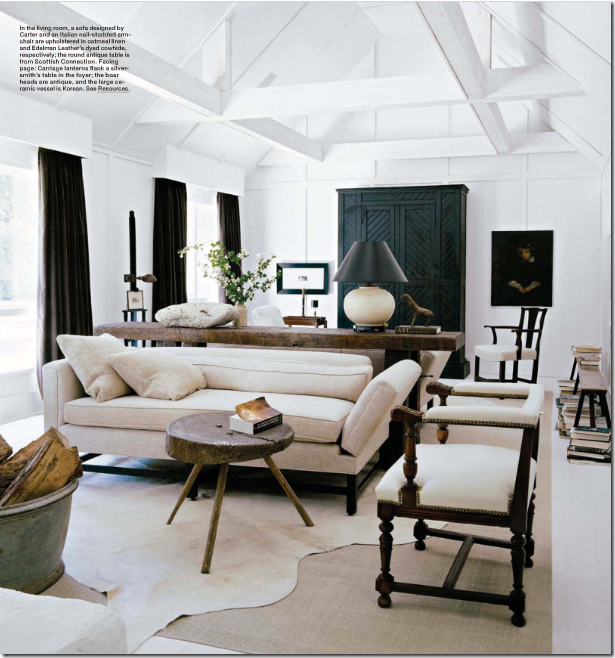 Washington DC interior designer Darryl Carter used deep chocolate panels to contrast with his signature white fabrics and dark woods. The contrast of the curtains truly gives the room its punch.
Washington DC interior designer Darryl Carter used deep chocolate panels to contrast with his signature white fabrics and dark woods. The contrast of the curtains truly gives the room its punch.
Uber talented Miles Redd paired exquisite De Gournay wallpaper with a trendy suzani and luscious green silk panels with a Greek key trim. This shade of spring green is the new, hot color!
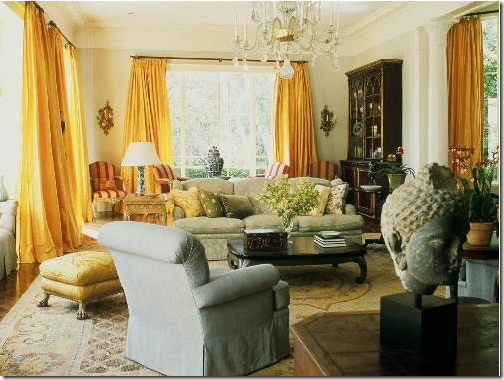 One of Michael Smith’s first national splashes was with this living room and the gorgeous saffron curtains. Let me repeat, gorgeous!
One of Michael Smith’s first national splashes was with this living room and the gorgeous saffron curtains. Let me repeat, gorgeous!
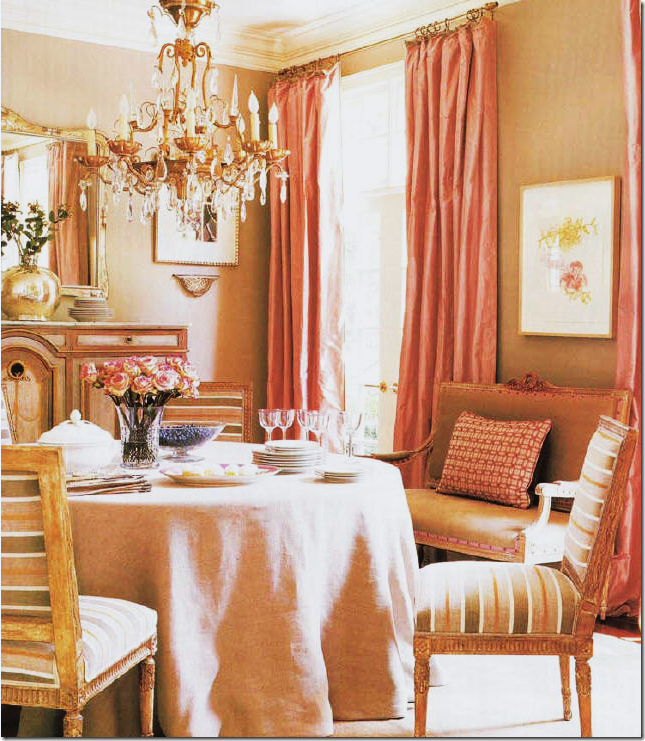 Suzanne Kasler’s dining room is beige with warm pink silk taffeta panels. The unusual color scheme came from the stripes in the chair fabric.
Suzanne Kasler’s dining room is beige with warm pink silk taffeta panels. The unusual color scheme came from the stripes in the chair fabric.
Michael Smith paired green silk with blue silk lining in this living room. Many designers use two fabrics when making curtains – the lining will usually be a less expensive fabric, but here Smith used the same blue silk found in his design scheme. Using a fabric, like a small check, as a lining is nice when there is a large of expanse of curtains showing through the windows. This will let house stalkers see pretty fabric instead of white lining!
DON’T: Do you understand now why I like plain panels? Whoa. Less is definitely more. First I will say this – using swags and jabots should be left for very tall elegant windows, not rooms with 8’ tall ceilings. Second, the construction of swags and jabots is a very learned skill, not something for a beginner to try out. It takes a true craftsman to effectively work with all the folds and pleats. In this picture you can see how amateurish the final product is.
Much better – swags and jabots in a tall ceilinged room somewhere in Houston, done by the King of Swags and Jabots of this generation – Mario Buatta. Even still, only the dressiest and most elegant of rooms should get this treatment.
DON’T: In this high ceilinged the room, the designer wasn’t sure how to add curtains. It is a problem wall of windows with small upper windows – do you ignore them? The first issue here is the fabric with the dark colors, the heaviness against the cool white walls. The second issue is the fussiness of the treatment, the valance, the trim, the gathered panels. Thirdly, – the “no rod” rod look really draws the eye to all the problems here! What to do? In this room, I would have put a rod all the way to the ceiling, just under the rafters – one long rod that went from the left to the right. Then, I would have done plain long panels in a soft fabric, flowing freely to the floor. The fabric would be a match in color to the walls – which would mean I would lighten up all the other fabrics in the room while I was at it! What a beautiful room – totally ruined by a misguided window treatment.
DO: How to handle high ceilinged white rooms, simple panels hung from the ceiling, ignoring the arches. Notice the difference between this room and the room above – here the curtains add just a texture, a breeziness – they do not command all the attention.
CURTAINS MADE OF PRINTED FABRIC:
I love curtains made of printed fabrics – toiles included. This oriental toile from Colefax and Fowler covers the walls and the windows. You might think this is too busy, but for a sitting room or morning room, it looks wonderful to me! This is actually one of my favorite toiles.
In this high ceilinged living room - the arched transom is left bare which tends to cut the window wall in half – I think the curtains are prettier when they hang from the top molding. Working with plaid can be tricky. I once used a large pattern like this but the fabric was defective, causing the lines to not be straight. Of course, the entire job had to be redone at a great personal expense.
Red and white curtains done by Houston interior designer Carol Glasser in her former family room. This picture, over a decade old, shows burlap chairs long before the current trend!!
The English Country Manor look – done to perfection by David Easton in his former bedroom. In the more exclusive country houses throughout the British Isles, printed fabrics for curtains are the norm.
Curtains that match the wallpaper is a nice designer touch. When ordering wallpaper, always check to see if there is a matching fabric, it makes such a nice finished look to use both in the same room.
Phoebe Howard used two panels hung from the top molding. Her formula calls for softly ironed in pleats and no puddle – her curtains just barely touch the floor with no break. Myself, I prefer a 3 inch puddle so that you can actually pick up the hem of the panel, step back, and let it fall softly into place. Ms. Howard of course doesn’t agree which is probably why she is so successful!
Striped panels frame the view. If a client doesn’t want to block the view or the window – when hanging the panels, place the end brackets about a foot past the window instead of closer in. This way, the fabric actually rests on the wall and not the window, thus saving the view! This needs to be figured in before the curtains are ordered so that there is enough material to cover the windows if the curtains are to be closed. If the panels are actually stationary, no extra yardage will be needed.
Eric Cohler used a wonderful cotton ikat fabric in this living room/dining room. I love the blue paired with the dark browns. The ikat panels are purely decorative, the sheers actually pull across the window to cut the glare. Again, I am not sure why the curtains were not pulled up the ceiling, instead there is about 3 inches of wall space showing, why? Perhaps the curtains were not tall enough, or a mistake happened in measuring. This is a showhouse, not a personal home.
I love these simple cotton checked curtains used in a family room. So fresh and pretty! There are no ironed in pleats which give the curtains movement and fluidity instead of looking like two stone columns of fabric.
 A great looking kitchen is softened with toile panels. I love patterned fabric curtains in the kitchen.
A great looking kitchen is softened with toile panels. I love patterned fabric curtains in the kitchen.
A pink Carlton V ikat is used everywhere – love it!
Toile walls and curtains in Spain. This is what I call very romantic looking curtains! Beautiful!
DON’T: This month’s Traditional Home showed a home with an owner who can’t quite decide what fabric she likes better. Curtains should be one fabric. Two is just too much. This looks positively silly. Notice even on the quilt a second fabric is sewn onto its body. Oy.
CURTAIN PANELS PAIRED WITH BLINDS:
 I love to use blinds, especially woven ones, with drapery panels. This is a good example of that. Here Suzanne Kasler handles this room beautifully – the blinds add a texture to the room that is especially visually pleasing and even necessary. Kasler takes the major colors from the curtain fabric and makes pillows out of them for extra color pop. One chair wears an accent fabric, the rest are neutrals. The sisal rug calms the room. I love this – it’s elegant yet friendly and inviting and not stuffy. See more of the room below:
I love to use blinds, especially woven ones, with drapery panels. This is a good example of that. Here Suzanne Kasler handles this room beautifully – the blinds add a texture to the room that is especially visually pleasing and even necessary. Kasler takes the major colors from the curtain fabric and makes pillows out of them for extra color pop. One chair wears an accent fabric, the rest are neutrals. The sisal rug calms the room. I love this – it’s elegant yet friendly and inviting and not stuffy. See more of the room below:
 The other side of the above room. In this section a rug replaces the sisal, providing extra pattern to the area where the curtains are absent. Look how pretty that wall of windows is with the four panels instead of just two, and the addition of the textured blinds finishes it all off. Beautiful!
The other side of the above room. In this section a rug replaces the sisal, providing extra pattern to the area where the curtains are absent. Look how pretty that wall of windows is with the four panels instead of just two, and the addition of the textured blinds finishes it all off. Beautiful!
A word about this curtain installation job. What looks like an easy job of hanging curtains was actually quite difficult. Suzanne Kasler’s thought process: The windows are short in this room. In order to camouflage the problem windows – Kasler places the rods as close to the molding as possible – yet the beam prohibits her from bringing them to the very top. The tops of curtains should always, if possible, all be at the same height. Therefore, all the rods are placed about 6 inches from the ceiling to be uniform. Then in order to make the windows appear taller, she brings the blinds to the top of the rods – hiding the wall space between the short windows and the curtain rod – making it appear the windows are taller and more elegant. Kasler thus creates a vertical line to the room by raising the eye up to the higher rods. Perfection! Hanging curtains is never an easy job and a good installer is worth his weight in gold. He is as important as the workroom.

Here, perfectly done – panels hung from the ceiling with tortoise shell blinds.
Perfection again- the panels meet the molding. The blinds hide the wall space between the top of the window and the curtain rod. This is called an outside mount.
Another beautiful window treatment with curtains and outside mounted blinds attached at a good height.
These shades were mounted inside the frame (inside mount) probably because they are doors instead of windows. You don’t get as clean a line with an inside mount. Very pretty room. I love to mix printed fabric curtains with textured shades in rooms where all the upholstery is solid fabrics – just like here. The shades and patterned fabric add warmth, coziness, visual interest, and texture.
 In this Italian styled apartment, Alessandra Branca again uses Italian Stringing to great effect, adding the tortoise shell blinds for extra texture.
In this Italian styled apartment, Alessandra Branca again uses Italian Stringing to great effect, adding the tortoise shell blinds for extra texture.
Love this! An older photograph – looking remarkably fresh.
Very pretty window treatments by Suzanne Rheinstein.
In the Bennison House, the curtains are of course, Bennison – paired with tortoise shell blinds.
The linen striped Bennison panels are hung from very simple rods with tiny rings.
DON’T: In an actual house found on the internet: notice the differences – first, this owner should have used a bronze rod for less contrast. Second, the rod should have been placed at the ceiling. Third, there should be just one blind, outside mounted, placed right under the rod – for a more cohesive, smoother look. The way this treatment is installed – you have the contrast of the trim color vs the wall color fighting with each other. One outside mounted shade placed at the ceiling line would have been so much prettier and simpler.
DON’T: Real house: this is a problem window – the arched transom really adds nothing to the design of the window – I would have ordered just one long blind and put it right under the ceiling rod – and raised it just to the top of the door for access in and out. Instead, there is too much going on in this window. Too many different window sizes, too many little shades, and the curtains are just a tad too short – this should have been fixed during the installation – the drapery pins could have been moved up just a bit. It’s not easy folks!
An open question to mass builders of Mac Mansions: Why do you install lots of little windows like these? What’s with the arched windows everywhere? I understand Palladian windows, but these sir, are no Palladian windows. Why bother pretending they are? Wouldn’t just a taller French door been so much prettier here than the short door given the Palladian treatment? Just a question.
DON’T: Real house: the same designer as above almost gets it right this time. The blinds and drapes are placed perfectly – but, but, but – if you are going to lower your textured shades – add a lining to them so you don’t get the invisible shade look from the glare! And don’t put the shades down at all different heights. The designer could have bought just one long shade with a blackout lining – why buy three, unless it was to save the money of a custom shade. If possible – one shade is better than three little ones. And one more detail that should drive a good interior designer to distraction – notice how the two middle panels “break” at the floor – yet the right panel just barely meets the floor. Which was the intended length – the breaking length or the just barely touching length? A good installer might have been able to correct this. If not – it should have gone back to the workroom for correcting. I wonder, did the designer not notice this? And just one other detail – notice that the panel widths are not uniform – the width of the middle panels are doubled, yet the right and left are single. Why? The panels really should be the same width if at all possible otherwise it might look unbalanced.
DONT: Why wasn’t the blind brought up the curtain rod? Why leave six inches of wall space showing? For what? And notice how tightly the curtain pleats were tacked or ironed in. These look immobile, like two columns made of concrete. The panels should be looser so you can almost make out the fabric’s pattern. Quite unattractive and I’m sure it cost a fortune.
DO: From the internet: a real house – notice how nicely they mounted the blind – all the way to the top and then they used an outside mount. Chelsea Editions embroidered panels – this designer got it right, exactly.
CORNICES AND VALANCES:
One of my favorite trendy and cluttered NY apartments, Alex Papachrisitidis used a valance made of Pierre Frey fabric. Cornices and valances are great to use where there is a large expanse of window – the cornice acts a bridge to the panels.
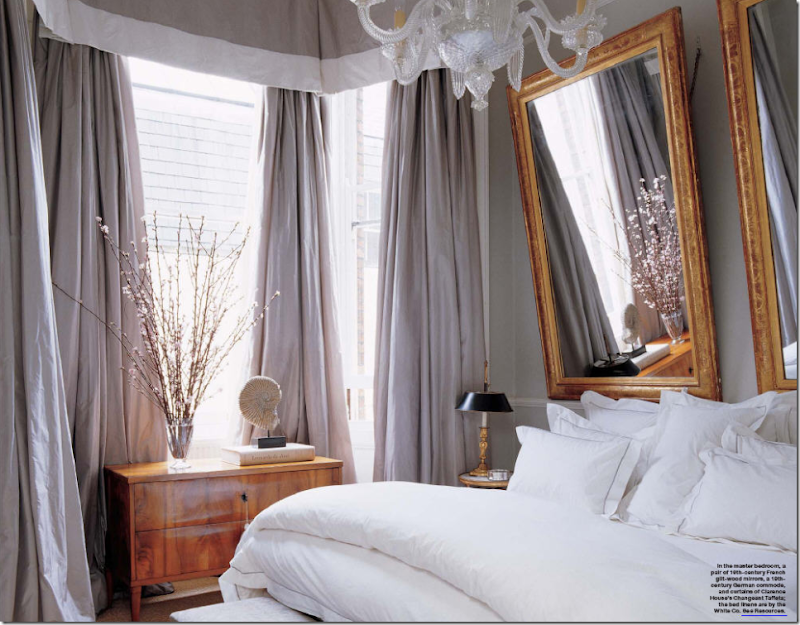 A soft valance with a wide white band and luscious, full, blowsy taffeta panels. The two mirrors for headboards are to die for. Notice how the Biedermeier chest picks up the same warm tones of the mirror – and how beautiful it looks against the cool tones of the icy blue silk. Absolutely romantic AND gorgeous!!!!!!!!!!!! NOTE: to hang mirrors to reflect downward, instead of upward – use a chain. You can see the chain used here that causes the mirror to lean forward. This is a perfect way to hang a mirror above a mantel. If the mirror is hung normally, you will get a reflection of the ceiling. This way, you get the reflection of the room itself.
A soft valance with a wide white band and luscious, full, blowsy taffeta panels. The two mirrors for headboards are to die for. Notice how the Biedermeier chest picks up the same warm tones of the mirror – and how beautiful it looks against the cool tones of the icy blue silk. Absolutely romantic AND gorgeous!!!!!!!!!!!! NOTE: to hang mirrors to reflect downward, instead of upward – use a chain. You can see the chain used here that causes the mirror to lean forward. This is a perfect way to hang a mirror above a mantel. If the mirror is hung normally, you will get a reflection of the ceiling. This way, you get the reflection of the room itself.
This living room/dining room by Beverly Jacomini, from Houston, has Bennison fabric curtains with scalloped valances. I adore this room!
 Indienne hand blocked fabric is made into panels with a valance and was also used for the upholstery. Phoebe Howard
Indienne hand blocked fabric is made into panels with a valance and was also used for the upholstery. Phoebe Howard
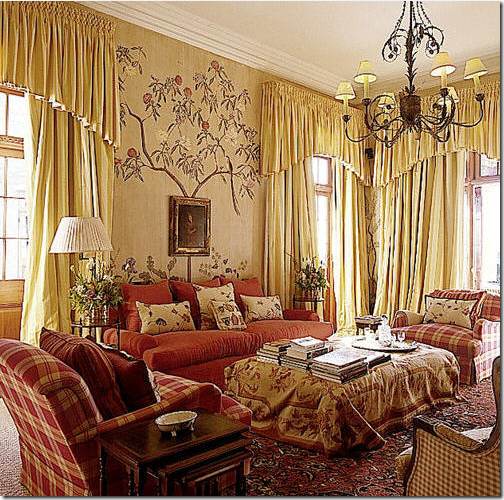 Soft smocked valances are aired with full panels in this beautiful room. I love the mural and the rug made into an ottoman. These curtains really make a statement and add so much to the room – exactly what curtains should do!
Soft smocked valances are aired with full panels in this beautiful room. I love the mural and the rug made into an ottoman. These curtains really make a statement and add so much to the room – exactly what curtains should do!
In a soft muted bedroom, ruffled valances are made of fabric that matches the walls – Phoebe Howard, of course!
Alessandra Branca used a gathered valance for the window and a smooth tailored valance over the bed.
 A beautiful, colorful, fun living room for a young family with curtains made out of my favorite Raoul Textiles fabric in yellow. Timothy Whealon.
A beautiful, colorful, fun living room for a young family with curtains made out of my favorite Raoul Textiles fabric in yellow. Timothy Whealon.
A warm pink printed fabric is paired with a shaped cornice – love this!
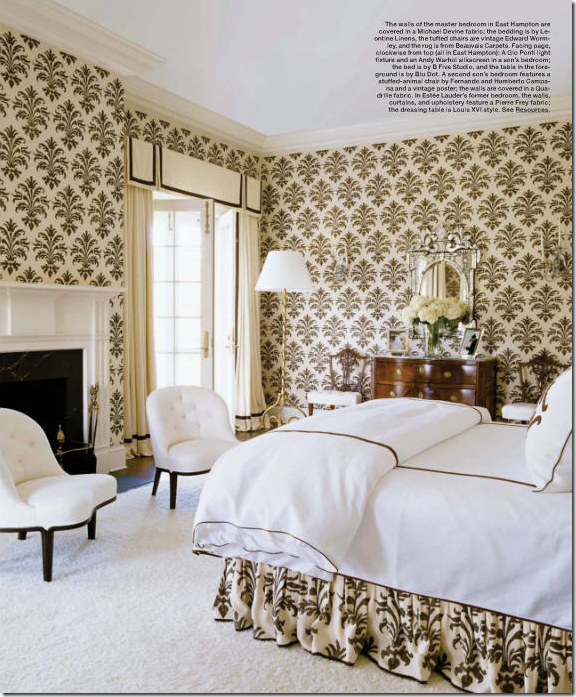 Blog favorite, Michael Devine’s fabric was matched with a valance crisply piped in black trim. So pretty!
Blog favorite, Michael Devine’s fabric was matched with a valance crisply piped in black trim. So pretty!
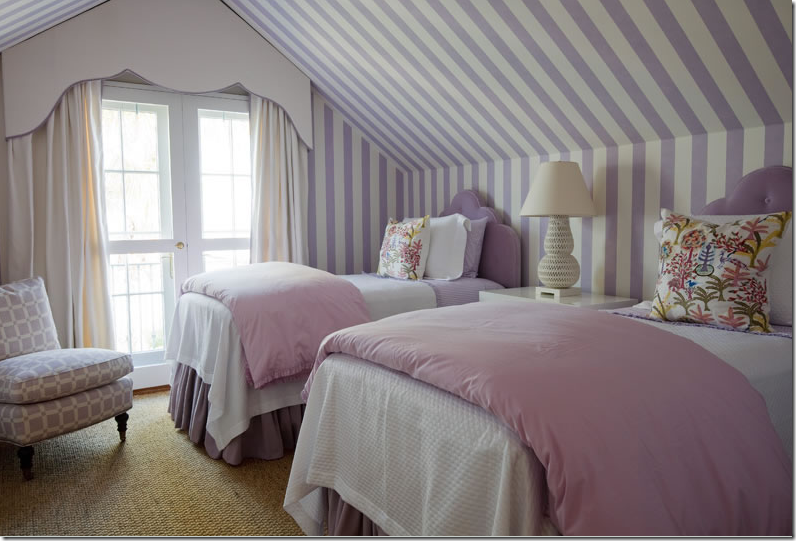 A tricky attic window problem was solved with this cornice treatment, outlined in lavender.
A tricky attic window problem was solved with this cornice treatment, outlined in lavender.
Miles Redd used a shaped valance outlined in blue in this Farrow and Ball wallpaper bedroom. The antique clock and bench are so beautiful.
In France, antique styled cornices in scalloped wood is used with white linen panels. The scallop motif is picked up in the bedcover too.
DON’T: Don’t forget the panels! I really think cornices and valances without the curtain panel are silly looking, what’s the point? Taking a second look – I see now that there actually are sheer cafe curtains which would explain the valances. But, using sheer, white cafe curtains still looks unbalanced against the bold, striped valance. The designer should have used one of the gold fabrics instead, imho!! I love the lantern though!
SHEER FABRIC:
Sally Wheat’s house. Sally used tie top sheer linen panels throughout her house, none are lined, of course! Available at Indulge Decor here. Love this room!!!
Cynthia Davis who owns Indulge Decor in Houston uses similar sheer, tie top panels in her bedroom. She also designs and sells the highly scalloped upholstered headboard at her store here.
Beautiful sheer curtains divide the bed from the room and the wall in this picture from the gorgeous book, Santa Barbara Living, by new blogger Diane Dorrans Saeks here.
When not to line fabrics – when using sheer, see through linens – as is used here in a French mas.
PORTIERES:
Panels of Bennison fabric hang between the bedroom and sitting room – I love using fabric instead of doors.
Brooke from Velvet and Linen added portieres to her bathroom after she took down the wall between it and her bedroom. This room first made me fall in love with Brooke!
Blog favorite Lauren Ross added heavy linen portieres between her breakfast room and great room.
Plum pink silk is paired with khaki in this portiere that adds just a touch of romance. Truly, not much is more romantic than fabric doors!
Houston interior designer Pam Pierce used portieres to cover her bookshelves, what is a great idea if you want to soften a book laden room.
Renea Abbott uses curtains to soften an outdoor room in California.
Sheer portieres divide this French bedroom from the bath area. John Saladino used this technique in a Villa di Lemma guestroom.
CANOPIES: A ROOM WITHIN A ROOM
Draped canopies are wonderful when used in large, cavernous bedrooms – they create a smaller room within a room. Here Phoebe Howard used a beautifully shaped canopy in all white – gorgeous!
Canopies are not for women only: Michael Smith used his own fabric for his bed’s canopy.
Sheer fabric used without a top treatment in Phoebe Howard’s famous pink bedroom.
Michael Smith used a subtle striped fabric with this canopy in a room wallpapered in De Gournay.
Charlotte Moss created one of the most beautiful Kips Bay rooms ever! A nod to Pauline de Rothschild, the bed floated in the room with three different blue and white fabrics, all designed by Moss.
For her daughter, Katie Ridder designed a half canopy over the window. So cute!
In a very small room, Alessandra Branca went large – a canopy and curtains made of bold chartreuse and cream stripes.
What if you don’t have a four poster bed? No problem! This canopy was created by hanging brass rods from the ceiling. BUT: beware – panels on canopies should be the right length, just as on windows. These are just too short.
SHADES:
Slouch or London Roman shades – heavy linen is gathered in folds in this bay window. Notice how wonderfully thick the bottom cushion was made – perfection!
More tailored Roman shades flank the bed, while panels are used in the other windows. Tailored and lovely.
Alessandra Branca uses Roman shades made out of striped taffeta silk. The chandelier and chairs are so beautiful – the entire dining nook is!
In New Orleans, these silk taffeta shades are so luxurious – they are sexy!!!
DON’T: when using a material that is see through, it’s always better to line the fabric, imo – otherwise you get this effect which takes away from the gorgeous folds and fabrics.
BURLAP AND DROP CLOTHS:
Attractive curtains don’t have to cost a fortune – using the ultra trendy burlap or lowly painters drop cloths will save you a bundle, but you will still have a very chic looking room. Here antiques are mixed with burlap portieres.
Here, burlap was used at the windows and as portieres between the living room and dining room, below:
The dining room with the burlap panels – since burlap is so inexpensive, use three widths instead of one – it will look so much fuller!
The very beautiful AND talented Layla Palmer from the famous (and soon to be more famous) The Lettered Cottage designed her breakfast room first using burlap curtains. That didn’t last long – things do change quickly around the cottage. Here she changed to drop cloths paired with tortoise shell blinds. As always, everything Layla does is darling.
And blogger Judy at Gracious Southern Living went a step further with her drop cloths – she added a black band at the hem which dresses them up. Drop cloths are really inexpensive – so why not double up when making panels, that way you will have very full looking curtains. Great job Judy!
COTE DE TEXAS CURTAINS:
In my bedroom, I have one long, short, cheap, ugly, horrible looking metal window! Mr. Slippers Socks Man PROMISED me when we moved in this house that we slowly replace all our windows with beautiful wood ones. To date, 15 years later, only two windows have been replaced – and this isn’t one of them. So, in order to make my lowly window look a little more impressive, I was lucky enough to inherit a true tortoise shell shade from friend that happened to fit my window exactly. I pulled it up to the ceiling and added four panels to give the illusion that my window is actually three separate units. It does look somewhat better this way, I think.
In my guest room, I used silk panels from Restoration Hardware and paired them with blinds from Target, which is a great place to get inexpensive blinds, but order them online, the choices are much greater.
It’s hard to see exactly – but at The Tanglewood House – there were French doors with two smaller flanking windows – I bought three blinds – raised them above the door and added panels of a heavy patterned linen fabric – nice because all the room is upholstered in solids!
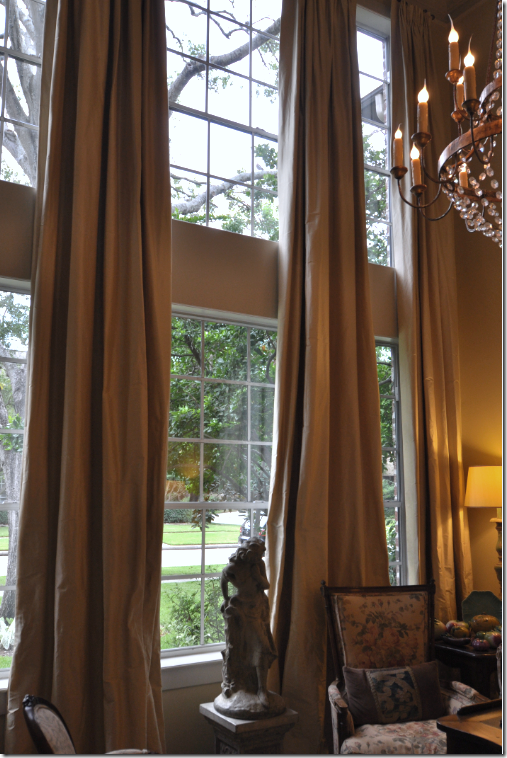 In my living room – I have six windows – it’s not quite double height, but the room is still very tall. To disguise all the cheap windows I put four long panels of a silk ticking fabric in pale gold. The curtains drastically changed the look of the room – warming it up, making it feel cozy, and still adding an air of sophistication, forever convincing me that it’s almost always better to have curtains than not.
In my living room – I have six windows – it’s not quite double height, but the room is still very tall. To disguise all the cheap windows I put four long panels of a silk ticking fabric in pale gold. The curtains drastically changed the look of the room – warming it up, making it feel cozy, and still adding an air of sophistication, forever convincing me that it’s almost always better to have curtains than not.
For this client, I used tiny pinstriped silk panels, double width, with simple bronzed rods.
In the Tanglewood House, the client already had plantation shutters, so I layered the heavy linen toile over them. The only window in the room – it is quite small, so we pulled the rod out past the regular 6” allowing the fabric to sit on the wall, making the window seem wider and taller. The actual window ends just about where the panel starts. MIMI – come visit me!!!
In this bedroom, done a budget with everything from Pottery Barn – I bought fabric by the yard from PB to make the curtains, then paired them with Target shades.
For this client I used seafoam silk taffeta and added a scalloped trim down the edges for an extra detailing. Farrow and Ball wallpaper and Chelsea Editions fabrics.
Cote de Texas Curtain Formula:
This is the formula I mostly use. If you take this to your seamstress and she follows it exactly, you should have a set of curtains you will be proud of and love!
1. Use either two or three widths of fabric depending on the size of the window. Always err on the wider amount. A small window will probably take two widths just fine. Do NOT go by standard measurements – or else you will end up with one width of fabric panels, which will look skimpy and cheap. It’s better to use an inexpensive linen than to skimp on an expensive silk! Consider using the more expensive fabric on a pillow instead – curtains require a lot of fabric!!!! Double width on a regular height room is approximately 12 yards of fabric.
2. Have the seamstress add wide hems on the leading edges and at the bottom. This way, the lining on the side will be sure not to show.
3. Be sure to order NO IRONED OR TACKED IN pleats!!! Very important – or else you will end up with two stone concrete columns of fabric.
4. Always use lining and interlining unless you are using a sheer. I use either bump or blackout linings. If the fabric is dense, bump may be all that is required, but the blackout lining adds so much. First it creates a heavy weight which makes the curtains drape better and second, the sun doesn’t come through blackout lining – especially important when using silk and see through fabrics. Tip: I also ALWAYS use blackout lining when making skirted tables and bedskirts for the same reasons: weight, draping, and sun rays coming through. I like to see the fabric, I don’t like to see through the fabric!
5. Measure the curtains from the top molding or ceiling to elongate the line.
6. If adding blinds – use outside mount and place the blinds right under the rod.
7. You don’t need to splurge on expensive rods – the thinner the better is fine in most cases. If you don’t like finials get a rod that attaches directly to the wall.
8. Go easy on the embellishments: contrasting tape is great on valances and in transitional settings. Trim is nice down the edges or the hem, but use a light touch – too much becomes goopy fast!
9. Don’t make your drapes too short. If you want them just “kissing” the floor, be sure you have a great workroom , measurer, and installer, this is very difficult to get exactly right. I usually order a 3” puddle which allows me to grab the hem, step back, and let the curtain fall gracefully in place. You might prefer just a slight ‘break” in your hem. Be sure to discuss the proper length with the measurer so there are no surprises. It’s always easier to fix a too long hem - a too short hem can be a disaster!
In Houston, I use Monica Hancock to measure and work with the workroom on all my curtains, bedding and softgoods. She also sells textured blinds at a great price. We use Bennie Davis to install everything – he is truly the best in the business!!!! To contact Monica call 832-443-1931. She will schedule Bennie for you too.
A great source for window treatment information is the book by blogger Jackie von Tobel. Jackie wrote and illustrated the definitive book on window treatments – order it here. And fyi: Jackie has a new book on bedding coming out soon (available for preorder here) along with a fabric line she designed! OMG – that girl is a dynamo.
Watch for the next installment of Top Ten Design Elements – Five coming soon to a blog near you!




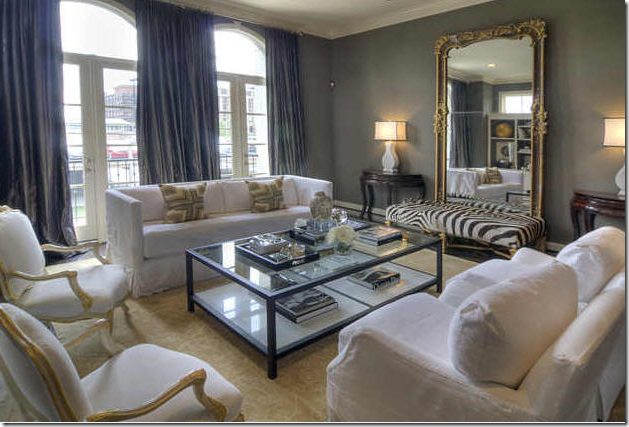








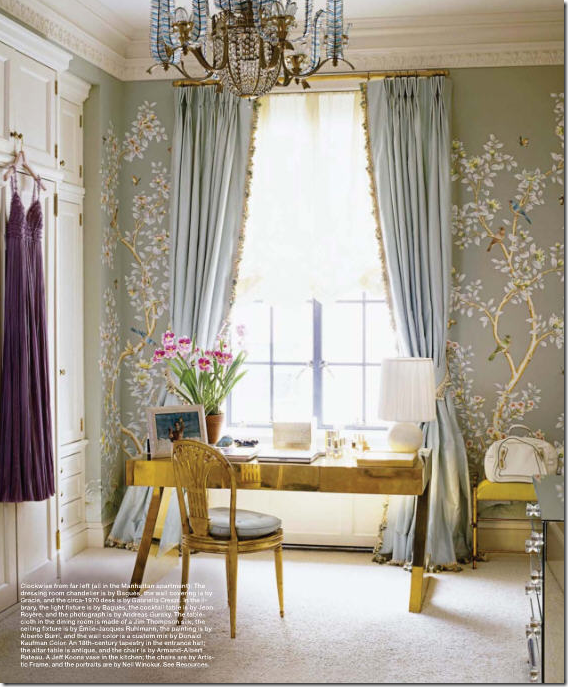






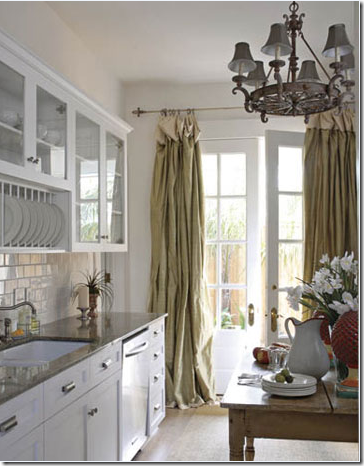



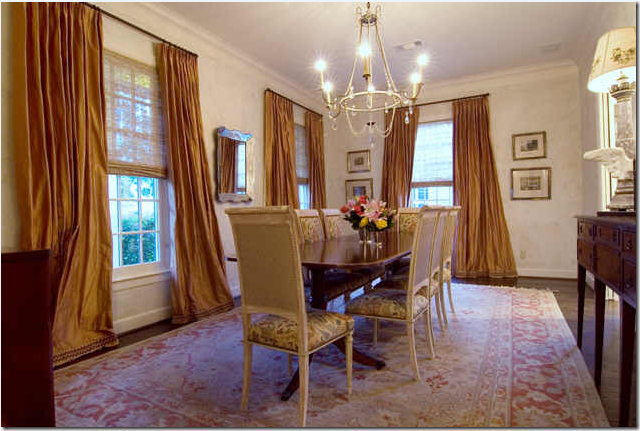





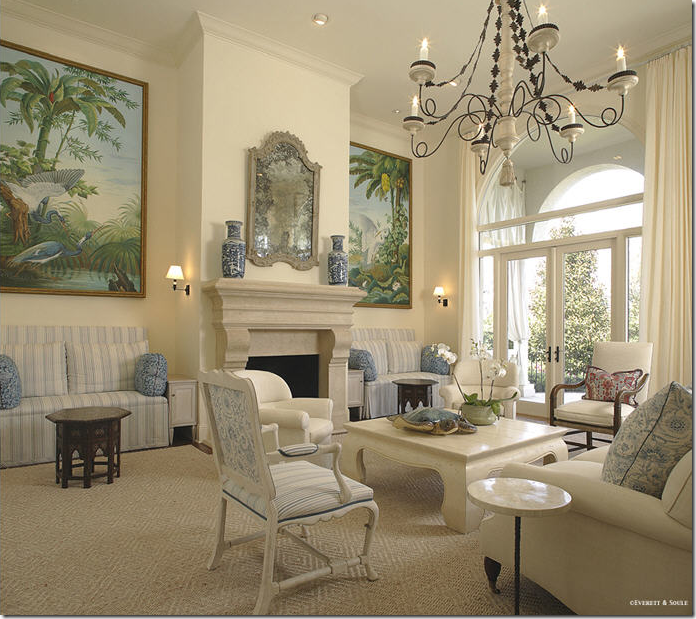


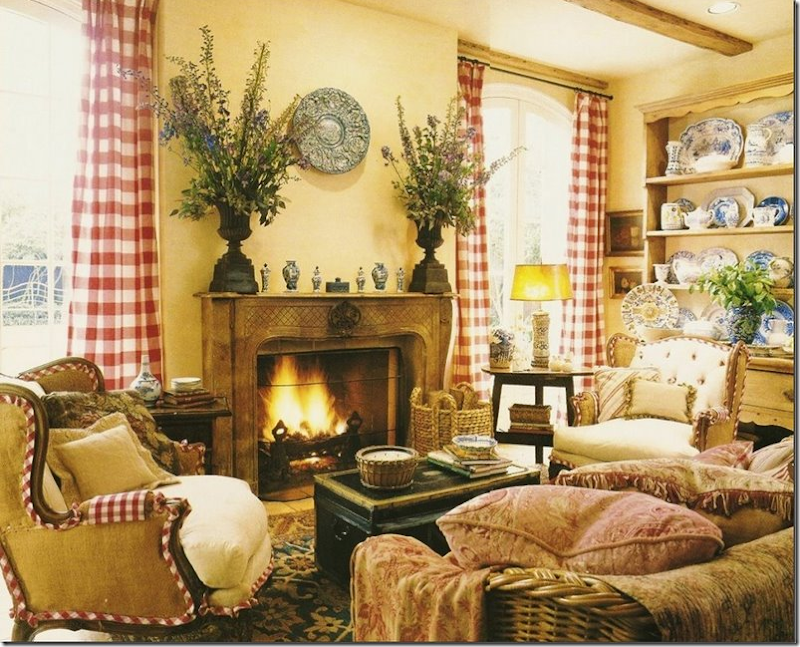




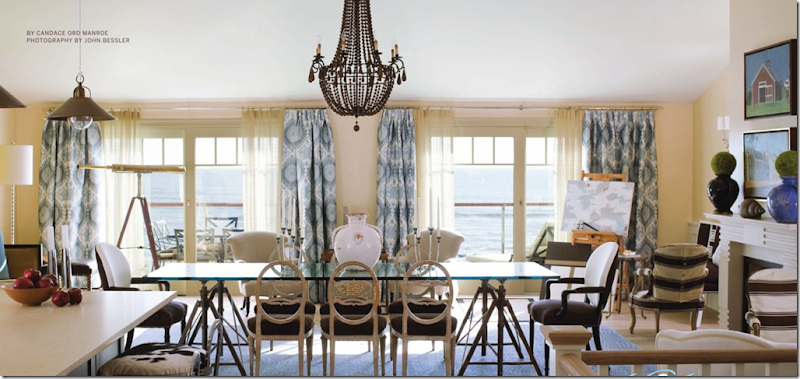


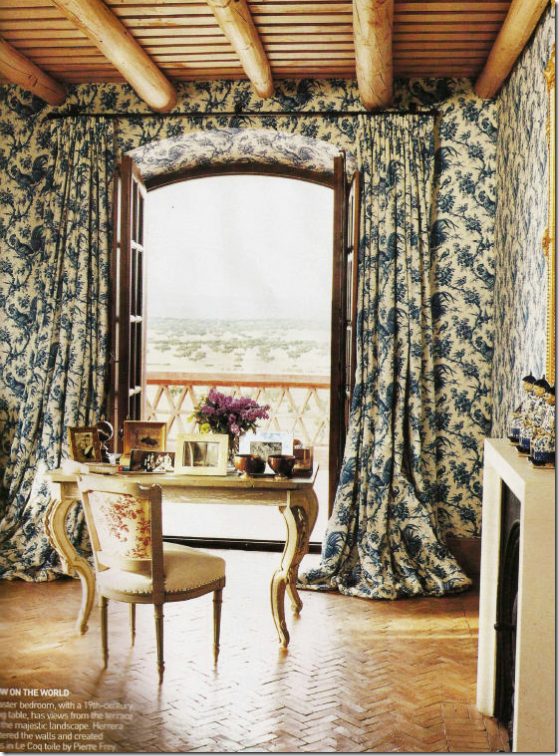









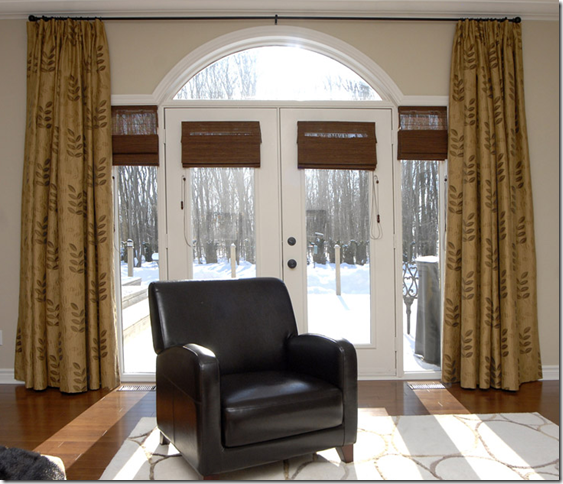













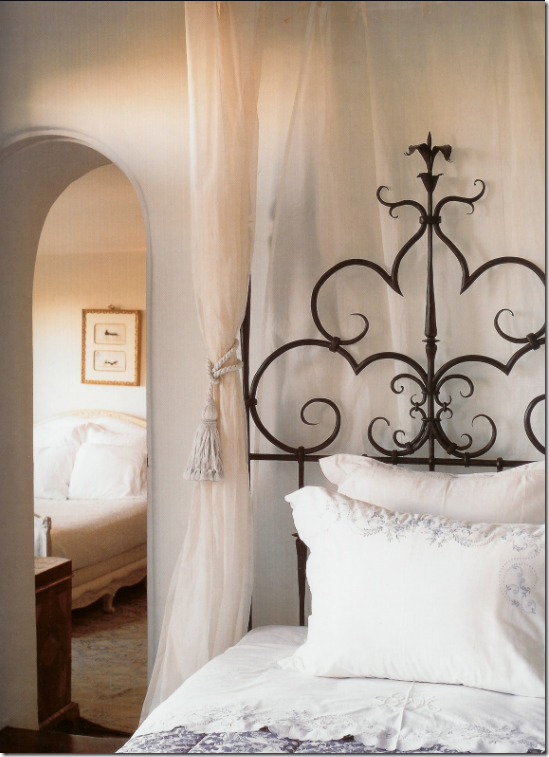



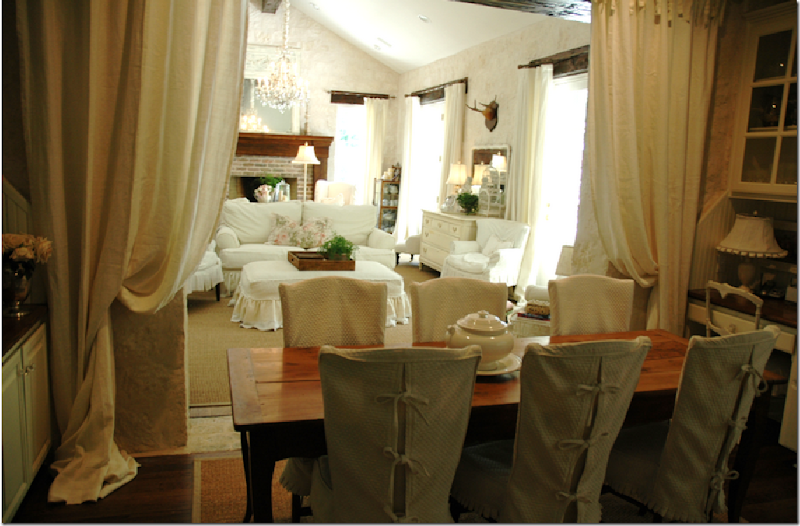



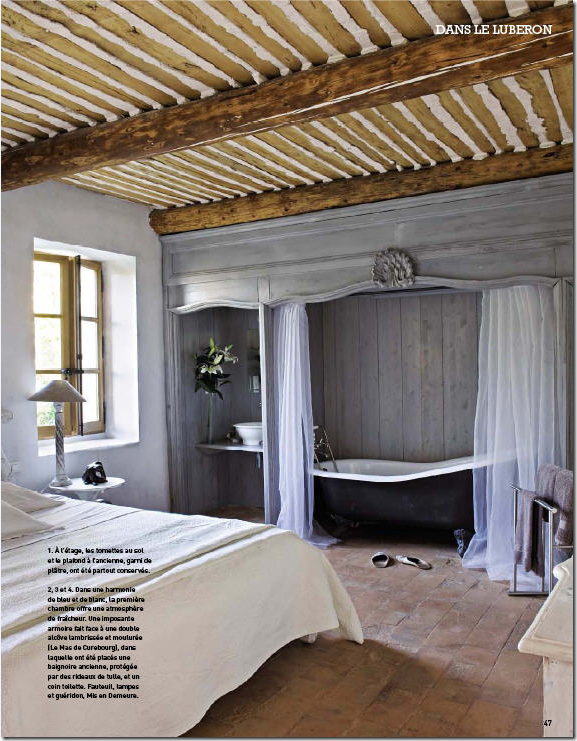

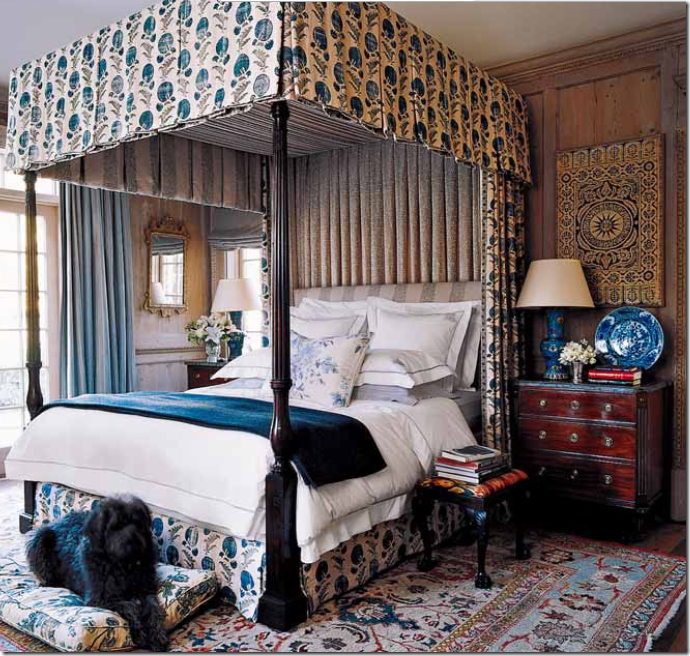




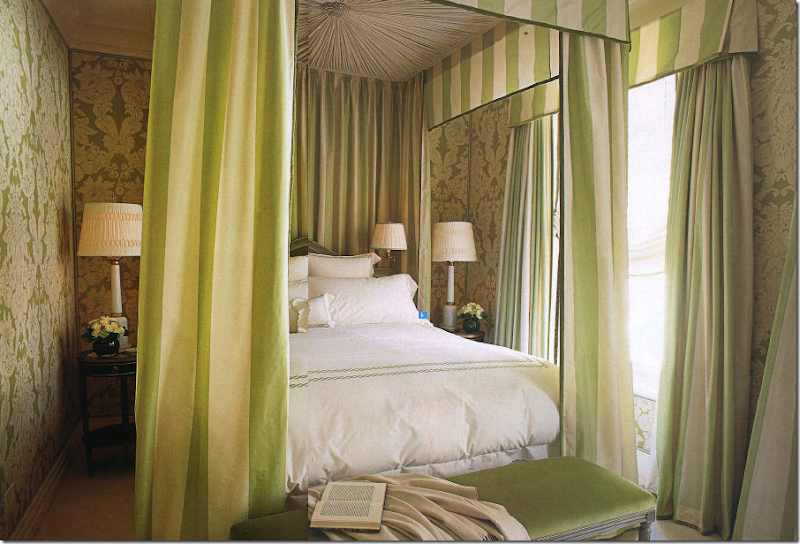







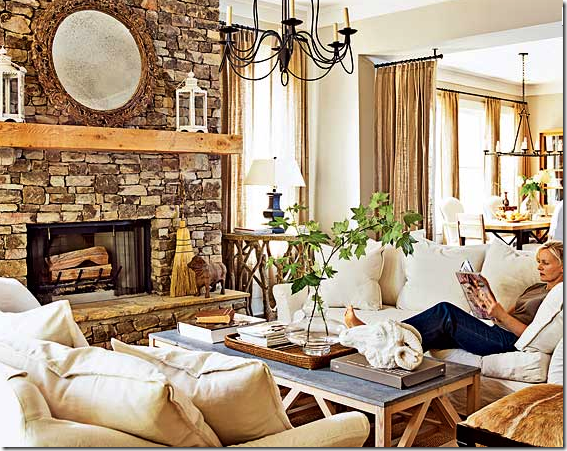




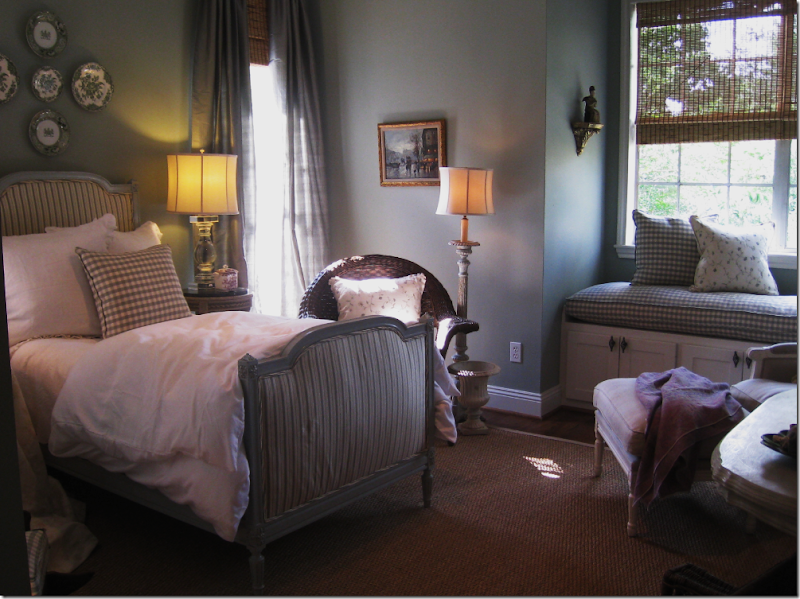





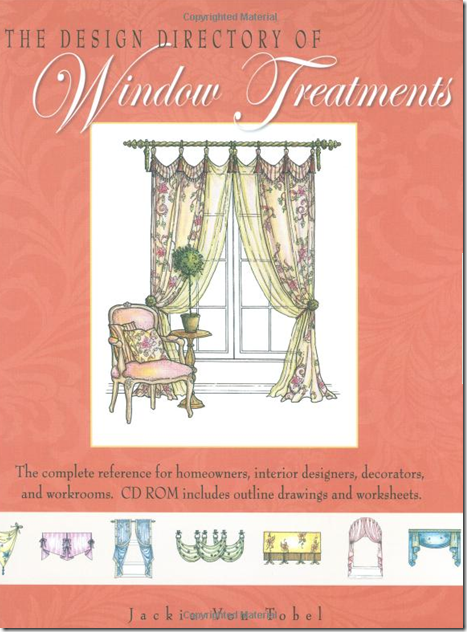


No comments:
Post a Comment